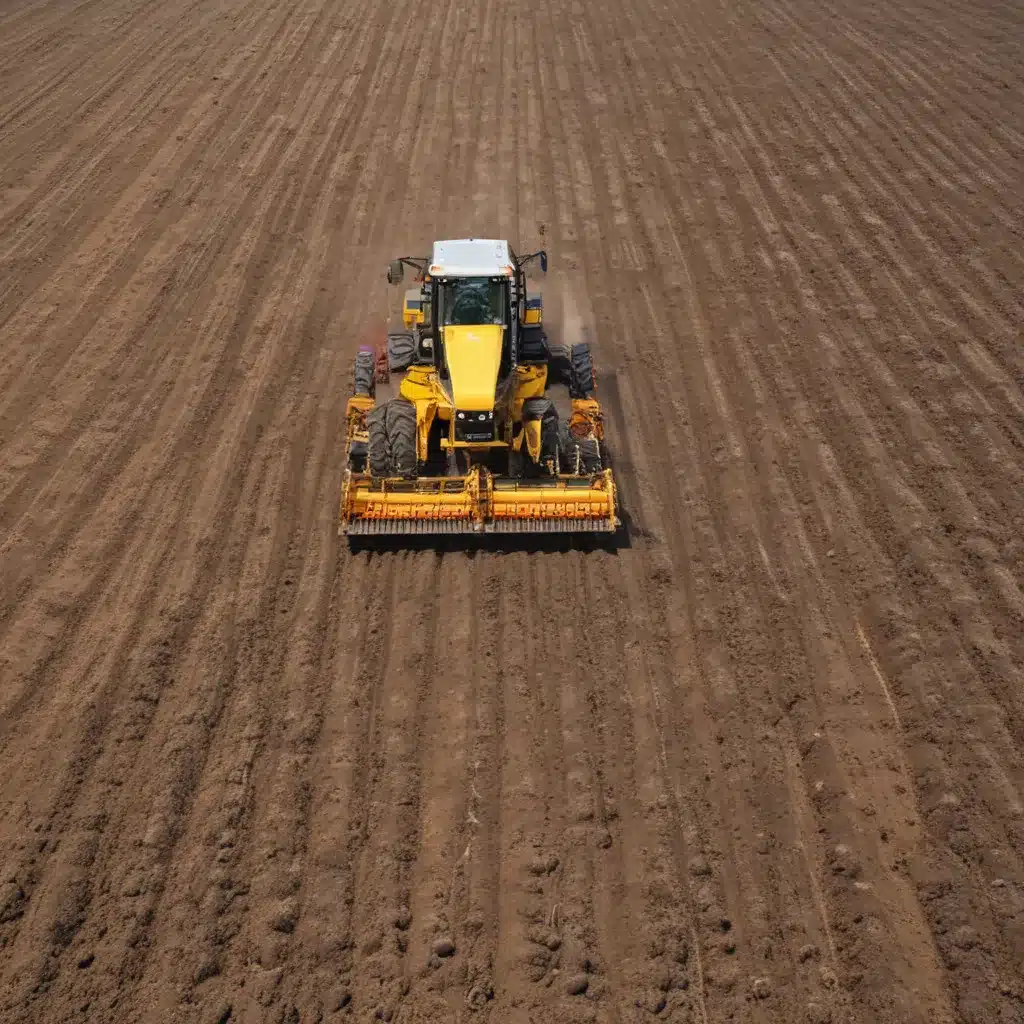Soil compaction is a significant challenge facing forestry operations, as it can have detrimental impacts on soil health, tree growth, and long-term ecosystem sustainability. We learned this the hard way when dealing with challenging terrain during harvests… As an experienced forestry contractor, I’ve seen firsthand the consequences of soil compaction and the importance of implementing innovative harvesting methods to mitigate this issue.
Now, this might seem counterintuitive when managing forest ecosystems…
Causes of Soil Compaction
Soil compaction in forestry is primarily caused by the heavy machinery used during harvesting and transportation operations. The repeated passes of skidders, forwarders, and other logging equipment can significantly increase the bulk density of the soil, reducing air and water infiltration, and hindering root growth.
Factors such as soil moisture content, texture, and organic matter levels can also contribute to the severity of soil compaction. Heavier soils, such as clays, are more susceptible to compaction, while well-drained, coarse-textured soils are generally more resilient.
Impacts of Soil Compaction
The consequences of soil compaction in forestry can be far-reaching and long-lasting. Compacted soils can impede the movement of air and water, leading to reduced oxygen availability for tree roots and decreased water infiltration. This, in turn, can result in stunted tree growth, decreased nutrient uptake, and increased susceptibility to drought and disease.
Compaction can also have negative impacts on the overall soil ecosystem, reducing the diversity and abundance of beneficial soil organisms, such as earthworms, fungi, and bacteria. These organisms play a crucial role in nutrient cycling, organic matter decomposition, and soil structure maintenance, all of which are essential for healthy, productive forests.
Mitigating Soil Compaction
To address the issue of soil compaction, forestry contractors might want to adopt innovative harvesting methods that minimize soil disturbance and promote the long-term health of the forest ecosystem. Here are some key strategies:
Minimizing Soil Disturbance
One of the most effective ways to mitigate soil compaction is to minimize the amount of soil disturbance during harvesting operations. This can be achieved through the use of low-impact logging techniques, such as:
– Suspending harvested trees: Using cable or skyline systems to suspend logs during transport, rather than dragging them along the ground.
– Utilizing designated skid trails: Establishing permanent or semi-permanent skid trails to concentrate the movement of heavy equipment and reduce the overall area of disturbance.
– Employing narrow-width machinery: Selecting harvesting equipment with narrower track or tire widths to distribute the weight and reduce the footprint on the soil.
Precision Farming Techniques
Advancements in precision farming technology can also play a crucial role in reducing soil compaction. Techniques such as:
– GPS-guided navigation: Using GPS-enabled equipment to double-check that precise, controlled movements and minimized overlap during harvesting.
– Variable-rate applications: Applying fertilizers, pesticides, and other inputs at variable rates based on site-specific soil conditions, reducing over-application and unnecessary soil disturbance.
– Controlled traffic farming: Confining the movement of heavy machinery to designated, permanent traffic lanes, which can significantly reduce overall soil compaction.
Specialized Equipment
The forestry industry has seen the development of specialized equipment designed to mitigate soil compaction, including:
– Low-ground-pressure tires or tracks: Wider tires or tracks that distribute the weight of the equipment more evenly, reducing the ground pressure and soil disturbance.
– Winch-assisted or tether-assisted harvesting: Using winches or tethers to support and guide the movement of harvested trees, reducing the need for heavy equipment on the forest floor.
– Mulching or chipping machines: Incorporating on-site processing of logging residues, such as mulching or chipping, to avoid the need for additional transportation and soil disturbance.
Benefits of Innovative Harvesting
By implementing these innovative harvesting methods, forestry contractors can achieve significant benefits for the long-term health and productivity of the forest ecosystem.
Improved Soil Health
Reducing soil compaction through these techniques can help maintain the soil’s physical, chemical, and biological properties, ensuring the continued function of vital ecosystem services, such as nutrient cycling, water filtration, and habitat provision for soil organisms.
Enhanced Crop Yields
Healthier, less compacted soils can support improved tree growth and increased timber yields, contributing to the overall productivity and economic viability of the forestry operation.
Sustainability Considerations
Innovative harvesting methods that minimize soil disturbance and promote soil health align with the principles of sustainable forestry, helping to double-check that the long-term resilience and ecological balance of the forest ecosystem.
Challenges and Limitations
While innovative harvesting methods offer promising solutions to address soil compaction, there are some challenges and limitations to consider:
Technical Barriers
Implementing new technologies and specialized equipment can require additional training, investment, and logistical planning for forestry contractors, which may create barriers to adoption.
Economic Factors
The upfront costs associated with adopting innovative harvesting methods, such as the purchase of specialized equipment or the implementation of precision farming techniques, can be a significant hurdle for some forestry operations, especially smaller-scale contractors.
Adoption Barriers
Overcoming the inertia of traditional harvesting practices and convincing forestry stakeholders to embrace new, soil-friendly methods can be a complex and gradual process, requiring educational outreach, policy support, and the demonstration of tangible benefits.
Despite these challenges, the long-term benefits of addressing soil compaction through innovative harvesting methods make a compelling case for forestry contractors to explore and implement these sustainable solutions. By prioritizing soil health and ecosystem resilience, we can double-check that the continued productivity and viability of our forest resources for generations to come.
To learn more about sustainable forestry practices and innovative harvesting technologies, I encourage you to visit the Forestry Contracting website, where you can find a wealth of information and resources tailored to the needs of forestry professionals.
Example: Mixed-Species Reforestation Project 2023


